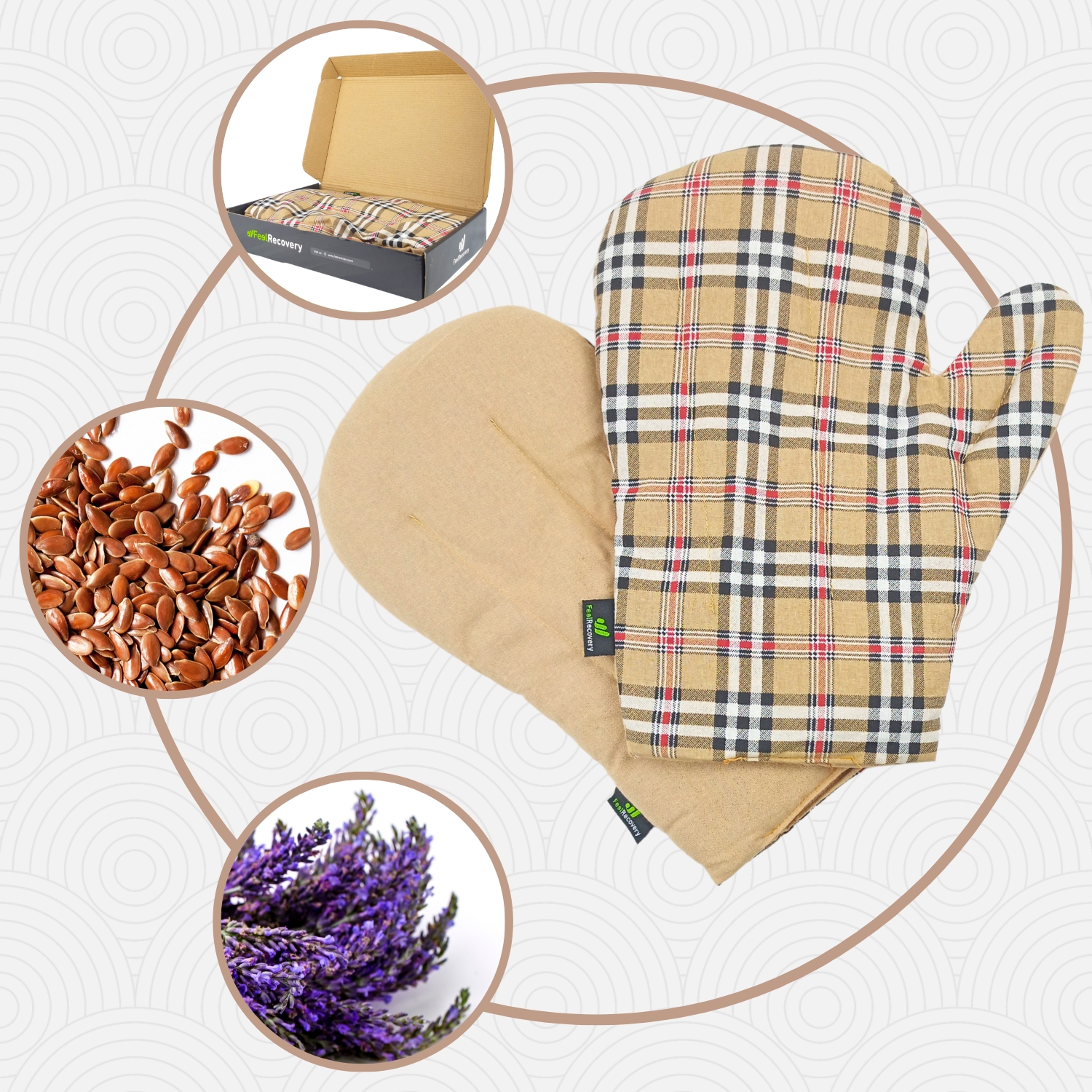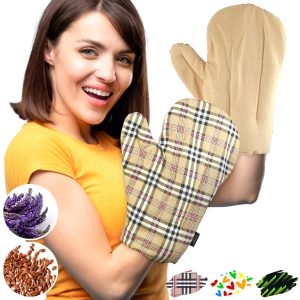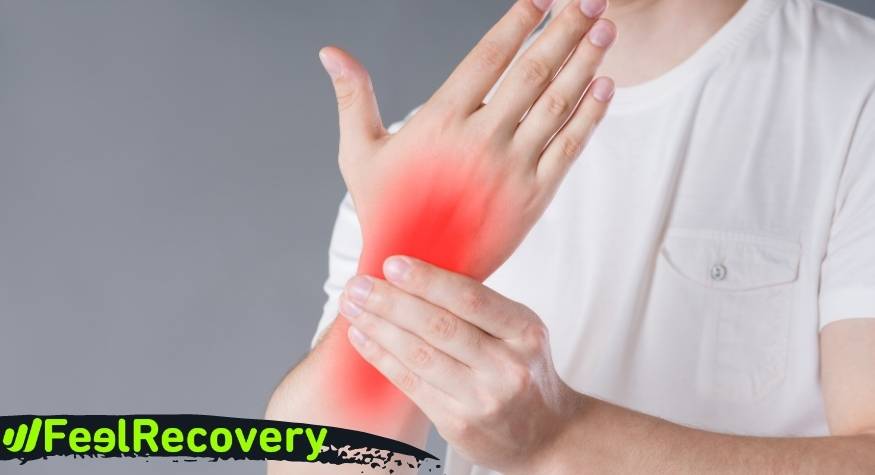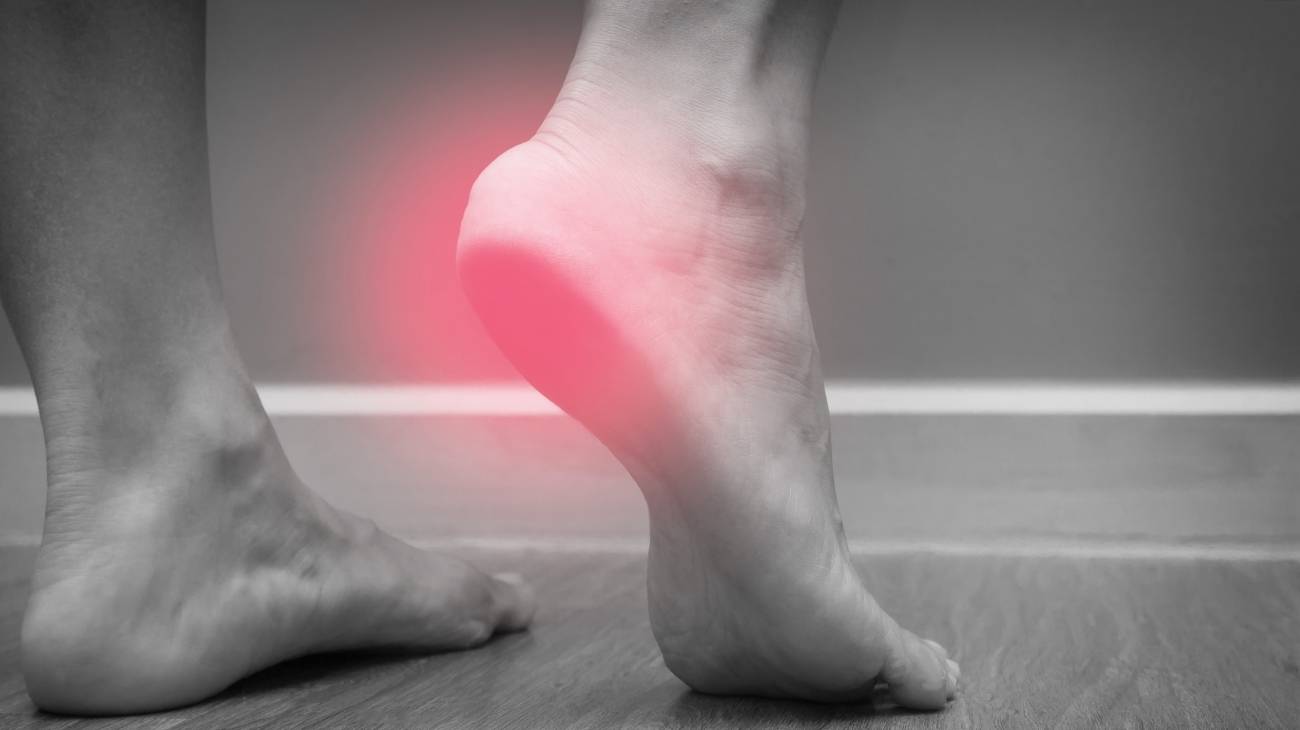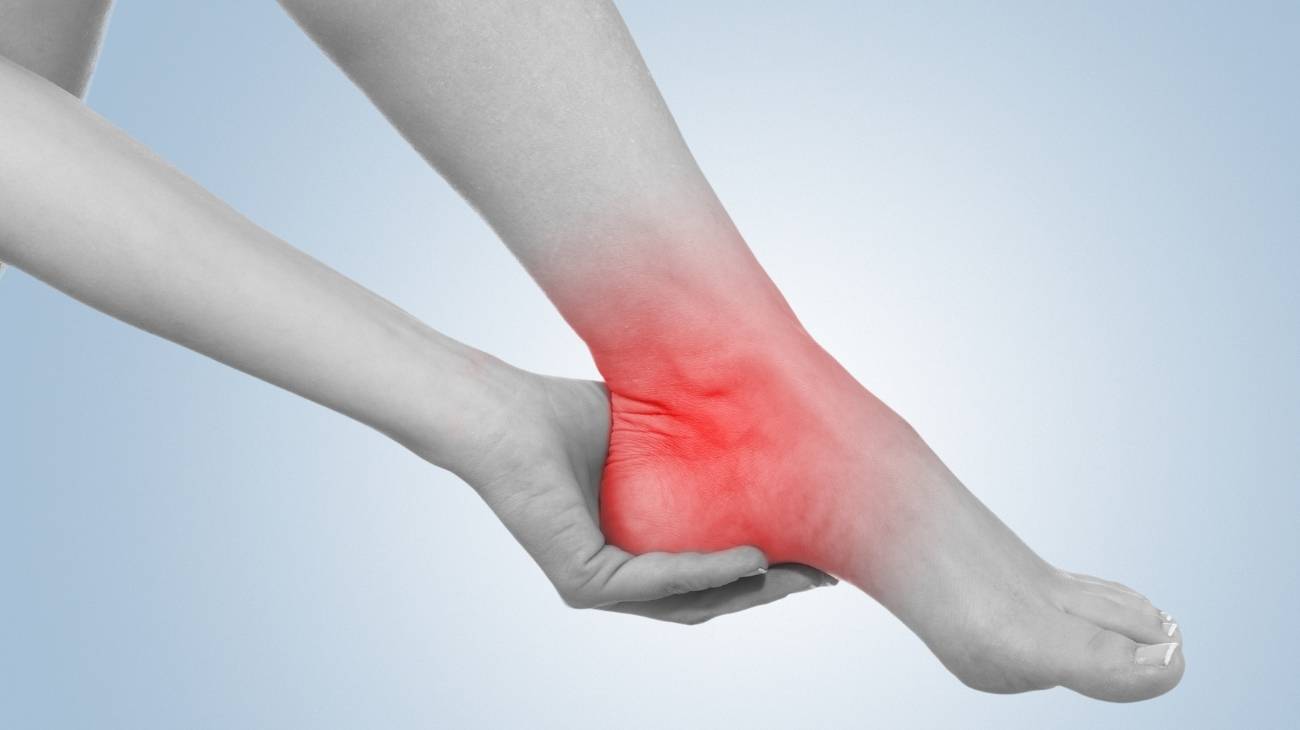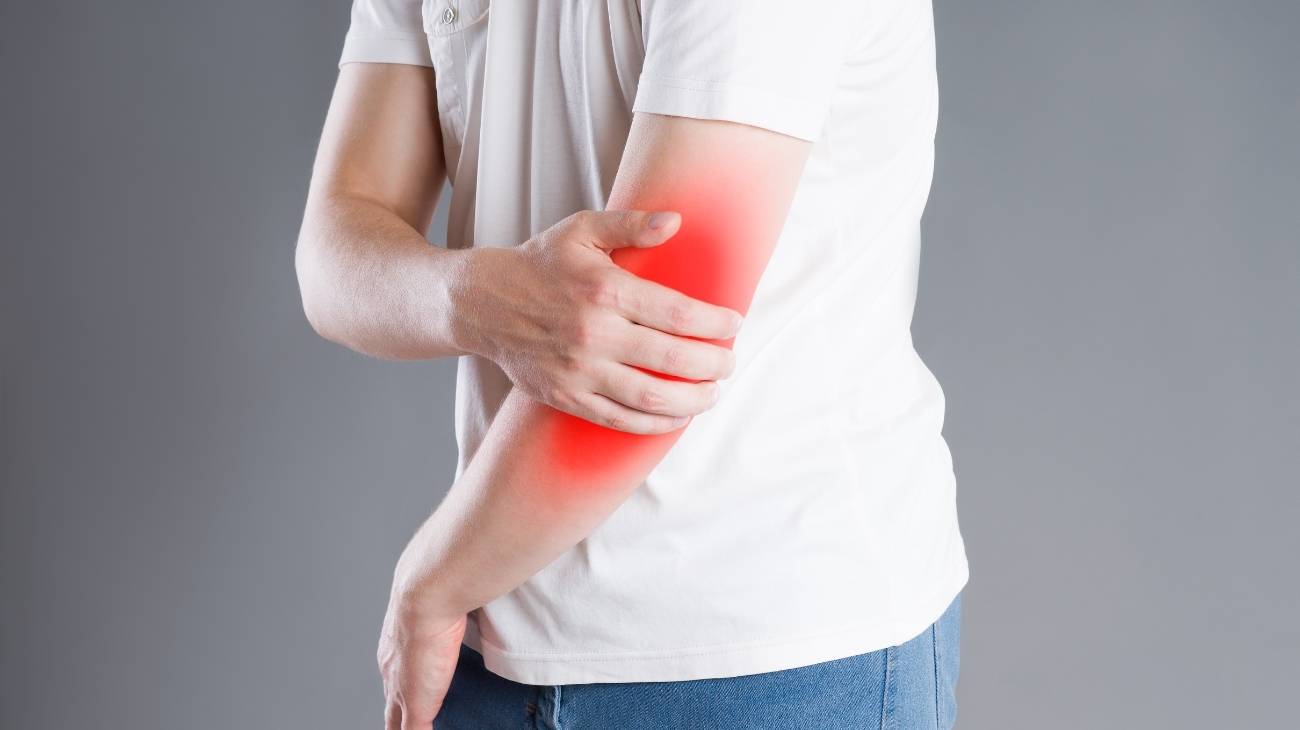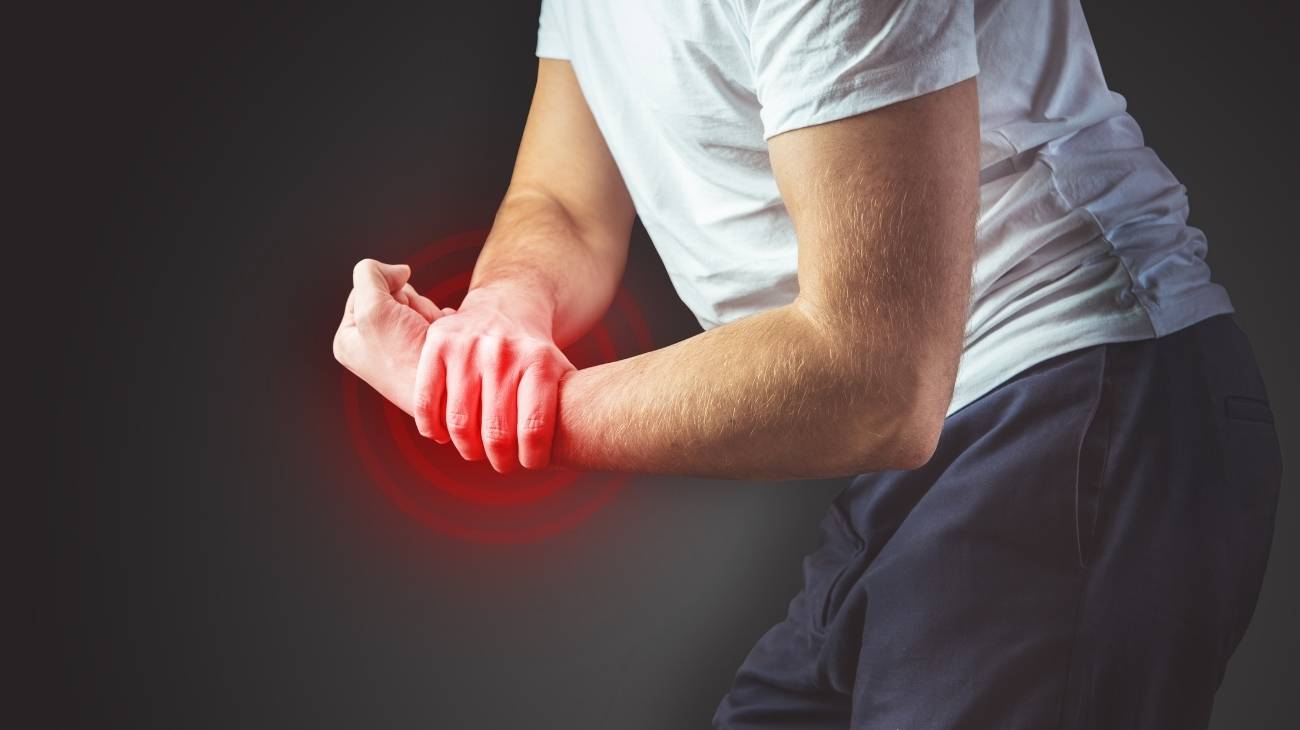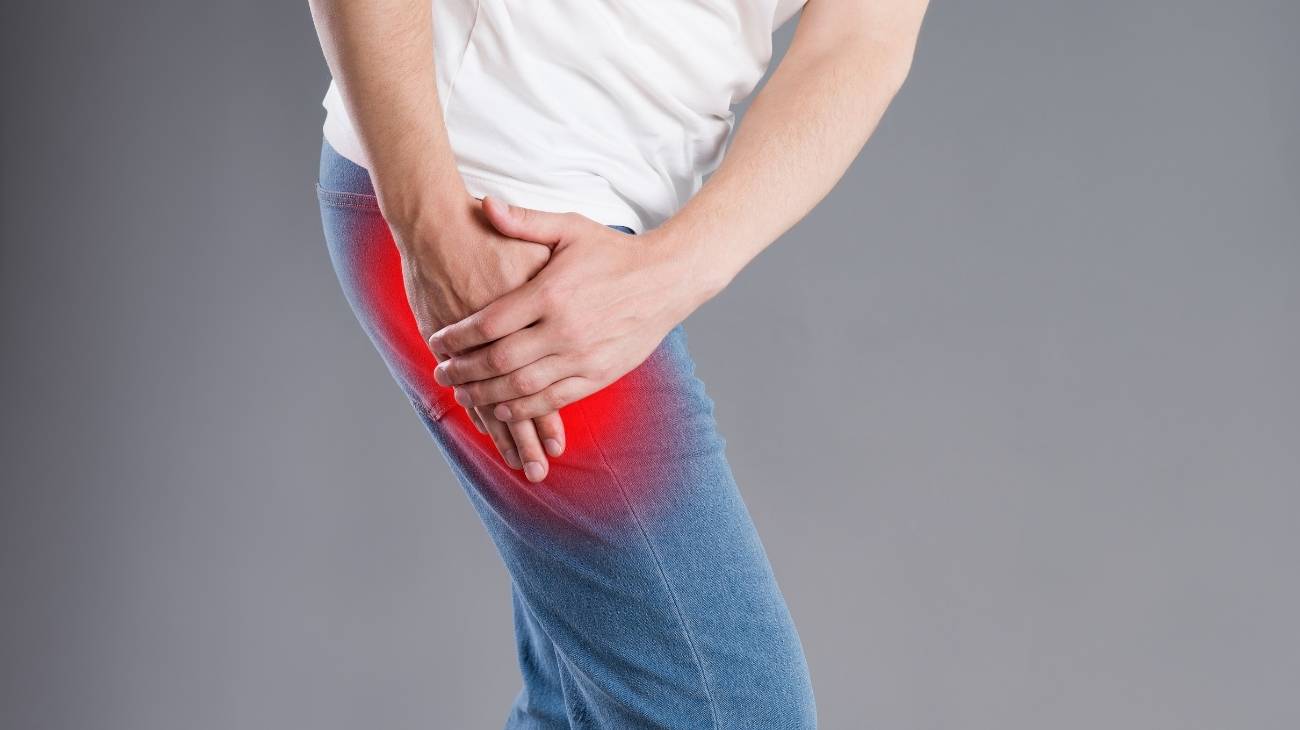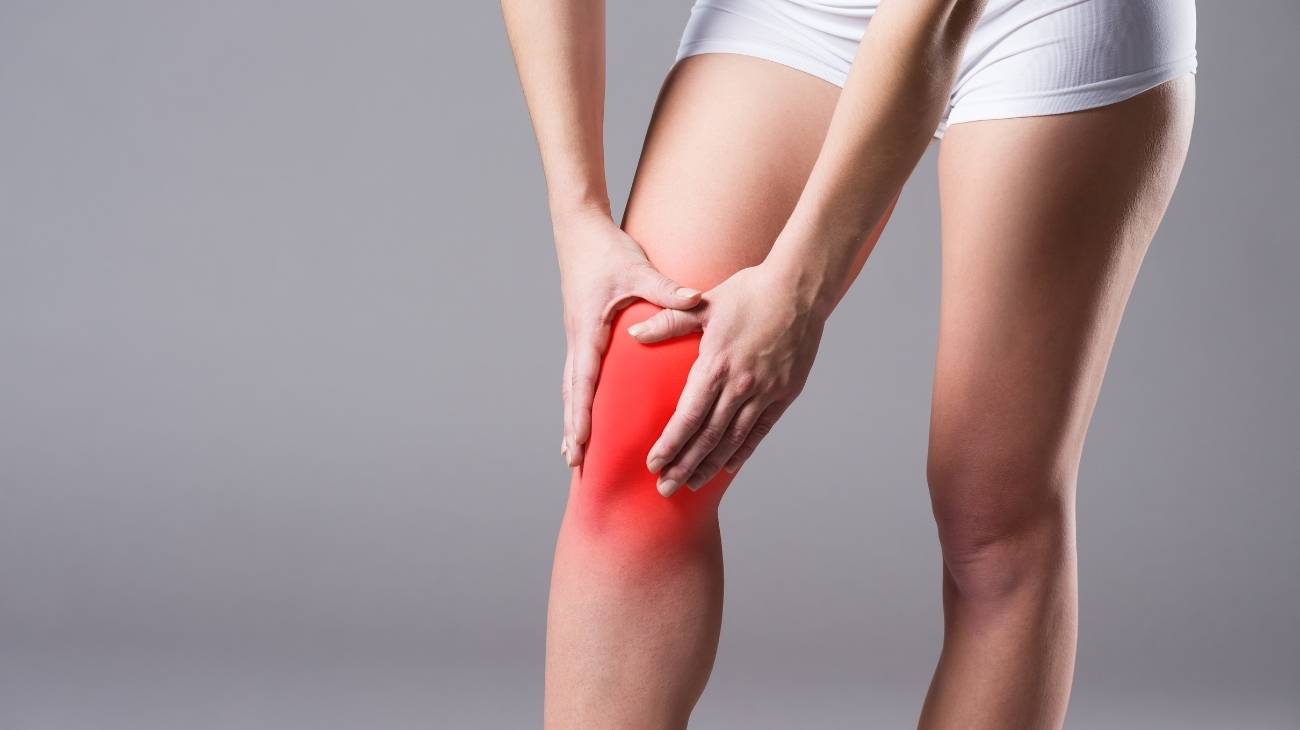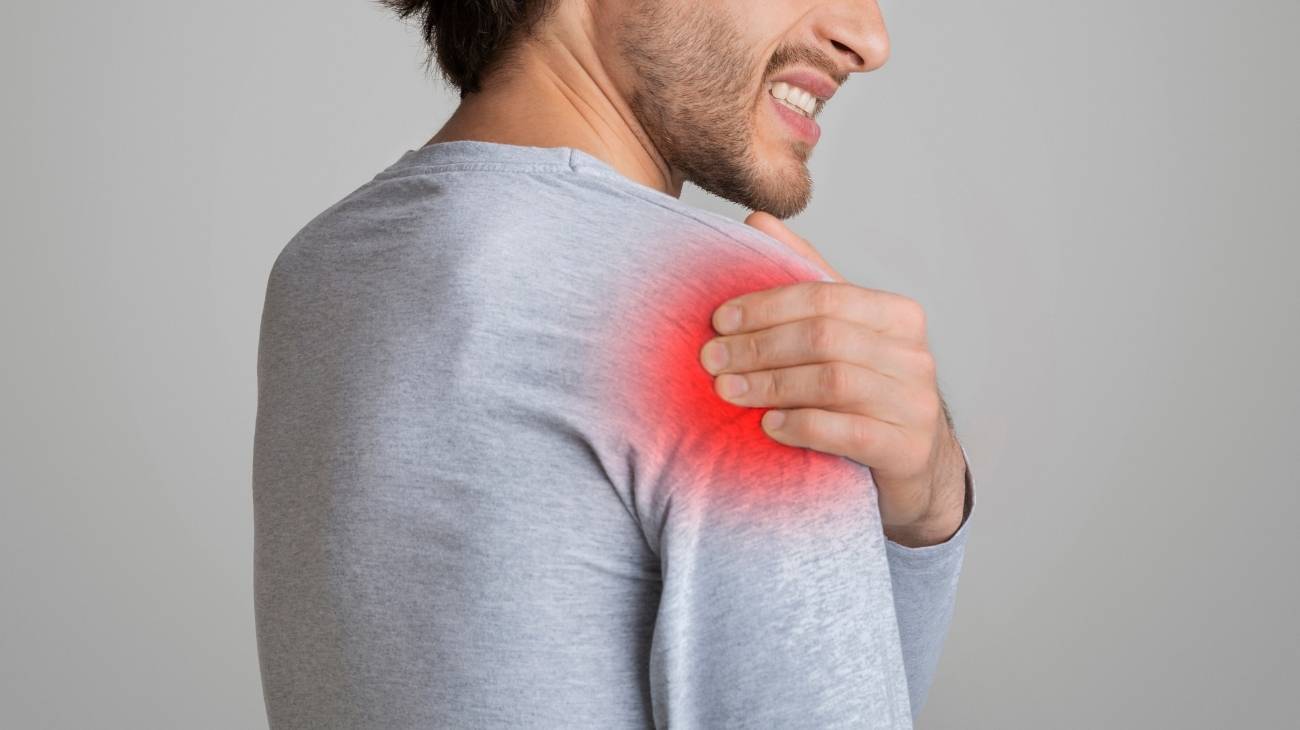- What is hand and wrist bursitis?
- What are the causes and risk factors for hand and wrist bursitis?
- Best products for hand & wrist bursitis
- Main symptoms that warn us that we have bursitis in the hands
- What treatments are available to improve the symptoms of wrist bursitis?
- What methods of prevention for bursitis in the hands and wrists are the most effective?
Bursitis in the wrists and hands is painful, annoying and causes limited movement. However, the patient's life can be improved with conservative treatment and other techniques. Seeking help at the signs of the condition is the first step to improving the symptoms of this ailment.
For this reason, you should know what hand and wrist bursitis is and what the most important risk factors are. You will find this information in the following paragraphs. You will also read about the prevention methods you should take into account to avoid bursitis, so let's get started.
What is hand and wrist bursitis?
Hand and wrist bursitis presents as an inflammatory condition of the bursae in this area. These two separate bursae, radial and ulnar, are filled with synovial fluid that serves to lubricate the movements between tendons, bones and hyaline cartilage. However, when this bursa becomes irritated (due to various factors) it begins to generate more fluid than normal.
This results in persistent swelling and discomfort for the patient. Such discomfort may arise abruptly or after several subsequent acute episodes. In addition, the person is likely to feel joint stiffness when trying to move the hand backwards, which leads to the onset of pain. Because of this, the main action to take is to stop the movement and see a doctor as soon as possible.
What are the causes and risk factors for hand and wrist bursitis?
This type of ailment can occur in different individuals regardless of their profession. Causes and risk factors linked to this condition include:
- Repetitive rotational motion: exposing the soft tissue to multiple continuous rotations causes irritation and oedema, which is a common factor in certain manual jobs and sports. This can cause inflammation in the joints, which directly affects the radial and ulnar bursae.
- Direct blows and trauma: on impact the body responds naturally by sending blood cells to the affected region. This creates an accumulation of fluid that is evident in the synovial bursae of the affected area.
- Injuries: When an injury occurs, the autoimmune system sends immunomodulatory cells to the area to act as a defence mechanism. Because of this, it is possible that an injury near the synovial bursa may be swollen by the immune system itself.
- Prolonged pressure on the wrist: while in the same position we often exert pressure on the tissue, pushing the cushioning capacity to the limit. Once this pressure is exceeded, the bursa is overloaded due to the limited space left for the joint to open.
- Arthritis: in rheumatoid arthritis the immune system tends to attack the tissues themselves, which is when the soft joint tissues, such as the bursae, are affected causing erosion and inflammation.
- Gout: the concentration of uric acid crystals in the joint body leads to gout disease, which inflames the surrounding tissues, e.g. the bursae.
- Osteoarthritis: as there is wear and tear on the cartilage that functions to protect the bones, there is less tissue to support movement. As a result, the bursa is subjected to increased pressure.
- Thyroid disease: Hypothyroidism causes adverse symptoms in some people in relation to their joints. For example, swelling is more likely to occur in small joint areas such as the hands.
- Chronic degenerative conditions: bursitis can occur due to a lack of recovery from certain diseases, which adversely affect the soft tissues.
- Infections: the body takes immediate action against bacteria, fungi and viruses by sending fluids containing white blood cells to attack the invading micro-organism. If for some strange reason, fluids increase excessively in the bursa, bursitis of the hands and wrists is likely to occur.
- Age: Older people are often prone to bursitis because many of them have bone wasting, debilitating diseases, loss of muscle mass or degenerative conditions.
- Congenital malformations: excess bone or the presence of spurs is a triggering factor for bursitis, due to the pressure on the bursae from the continuous effort they must undergo to lubricate the affected region.
Best products for hand & wrist bursitis
Bestseller
-
Acupressure Mat and Pillow (Black/Gray)
$49.95 -
Acupressure Mat and Pillow (Green/Navy)
$49.95 -
Acupressure Mat and Pillow (Pink/Bordeaux)
$49.95 -
Foot Massage Roller for Plantar Fasciitis (Black)
$19.95 -
Foot Massage Roller for Plantar Fasciitis (Green)
$19.95 -
Foot Massage Roller for Plantar Fasciitis (Pink)
$19.95 -
Microwave Arthritis Gloves (2 Mittens) (Hearts)
$29.95 -
Microwave Arthritis Gloves (2 Mittens) (Oxford)
$29.95 -
Microwaveable Heating Pad for Pain Relief (Hearts)
$19.95 -
Microwaveable Heating Pad for Pain Relief (Oxford)
$19.95 -
Microwaveable Heating Pad for Pain Relief (Sport)
$19.95 -
Wrist Brace (Black/Gray)
$19.95 -
Wrist Brace (Green/Navy)
$19.95 -
Wrist Brace (Pink/Bordeaux)
$19.95
Main symptoms that warn us that we have bursitis in the hands
It is wise to visit a doctor when you suspect you have bursitis, the doctor may ask questions, feel the area and ask you to perform movements.
At the first appointment, the doctor will look to see if you have bursitis:
- Pain in one or both hands: the nervous system alerts to an abnormality in the area causing pain. This sensation of discomfort is caused by stiffness of the muscle-tendon structure or inflation of the bursae
- Sudden swelling: the accumulation of fluid in the tissue is a normal reaction of the body to an abnormality. Thus the superficial tissue becomes swollen, reddened and tender.
- Difficulty or decreased movement: pain, swelling and fluid retention cause the bursitis patient to move the joint with great effort. They may not be able to do so at all, or just trying to do so may be very painful.
- Feeling of increased temperature: dilation of the vessels and increased blood flow leads to increased heat in the affected area.
- Numbness: since there is a joint disturbance, it is normal for the nerves in the tissue to be affected. This is why the patient tends to lose some of the sensitivity in the hands, wrists and even in the ulna area. They may even feel stiffness.
- Lump at the top of the wrist: the excessive amount of fluids that the autoimmune system delivers naturally affects the area. Sometimes these fluids are retained in the area, creating noticeable nodules.
- Tingling on the inside or outside of the hands: the same disease can sometimes alter the normal nerve sensation that should be transmitted by the body. Paresthesia in the hands is associated with numbness, pain and burning.
- Reddened skin: the skin becomes flushed as a direct consequence of increased internal blood flow.
- Painful sensation when writing, lifting or grasping: when a bursa is hypersensitive, any related movement triggers pain, as the space at the joint opening is affected.
What treatments are available to improve the symptoms of wrist bursitis?
After a positive diagnosis of wrist or hand bursitis, the doctor will prescribe rest, at least for a certain period of time. Each doctor will determine the degree of hand mobility allowed on a case-by-case basis. Recovery of the wrist and hand usually takes, on average, 1 to 6 weeks.
In more advanced cases, certain common treatments can be applied, which are detailed below
Alternative and complementary therapies
Ancillary treatments help the patient to feel less pain and to find a certain mental balance to cope with the ailments. These rehabilitative approaches are:
- Heat and cold therapy: One of the best ways to reduce inflammation of the synovial tissue is with the help of heat and cold compresses. These should be applied to the area several times a day for 15 to 20 minutes. The soothing effect of cold is gradual, so it should not be left on longer than necessary, while heat stimulates the bloodstream to relax the joints of the hand and wrist, leading to improved movement and decompression of the bursa opening. In this case, cold and warm compresses, hot and cold water bottles and gels are necessary to help bring the correct temperature.
- Compression therapy: For the wrist region, compression therapy is often very effective. The doctor may recommend a kind of wrist brace to cover the joint, which should be fitted by a specialist so that it is not too tight or too loose. In the first case, it could cause overloading of the bursa or impede blood supply. It should be remembered that these have the dual function of compressing and immobilising. Therefore, rest and gradual elevation are necessary in this treatment, even more so if one of these is used after a bursectomy. Splints and elastic bandages may also be used.
- Acupressure therapy: it is possible to undergo this oriental medicine as long as the person performing it is an expert. It should not be forgotten that massages are not recommended for bursitis because they can affect the synovial sacs and cause further injury. If the doctor refers the patient to an acupressure therapist, he or she will massage different strategic points of the body so that the patient releases endorphins, which work as analgesics and cause a reduction in muscle stiffness and relief from pain.
- Thermotherapy: deep heat therapy with compression devices at cutaneous level is considered one of the most effective treatments for this type of illness. In addition, the internal heat causes the nerve roots not to send pain signals to the brain, which reduces the patient's stress.
- Natural remedies using plants: Hand baths are important for relaxing the muscles of the hands and wrists. For this purpose, different types of herbs and plants with healing effects are used in the warm bath. For example, mint, ginger, rosemary and lavender are commonly found in this technique.
- Healthy lifestyle habits: After the development of acute bursitis it is important to improve daily habits. In these therapeutic aspects, the focus will be on returning to gradual strengthening of the wrist. Once strength and mobility are restored, care must be taken not to re-irritate the bursae. This re-education of the patient includes prohibiting heavy lifting, correcting posture for certain tasks and eating a balanced diet low in uric acid.
Dietary supplements
These types of additives that are prescribed for the patient to take during the day are based on components that help to improve the symptoms of bursitis. That is why elements that are present in the articulatory body of the hand and wrist are included in pills, tablets, powders or liquids. Among the most common are chondroitin sulphate, glucosamine, magnesium and selenium.
Physiotherapy treatments
It is important to keep in mind that massages are only recommended for bursitis if performed by a professional physiotherapist, otherwise it may cause injury and internal bleeding in the affected areas.
This type of therapy includes:
- Exercises: the physiotherapist's integral approach will be to improve the range of movement. Thus, after a recovery time, manual strengthening is encouraged to be reactivated. With repetitions, stretching and light stabilisation, appropriate education of the muscles is sought to prevent new injuries.
- Ultrasound: by means of sound waves, a stimulating heat effect is achieved that is imperceptible to the patient. The devices, techniques and energy-conducting media (oils and creams, among others) vary according to the professional's criteria.
- Electrical stimulation: There are various types of electrical stimulation that are commonly applied by physiotherapists. They range from TENS, EMS to microcurrents. These devices exert an analgesic, anti-inflammatory and thermal effect on the affected areas. The most important advantage of this physiotherapeutic technique is that it usually has no noticeable side effects.
- Laser: In cases of severe bursal inflammation, laser treatment improves the signs of the condition. Amplified light with low power or high intensity is used according to the individual patient. This facilitates the progressive recovery of the tissue, which is why it is applied directly to the area.
Medications
Drug therapy must be dosed and prescribed by the doctor, so it is never advisable to self-medicate as this can severely affect the symptoms and the development of the disease.
Among the medications most commonly prescribed by doctors for the treatment of hand and wrist bursitis are:
- Anti-inflammatory drugs: ibuprofen, naproxen and acetylsalicylic acid are very useful in reducing inflammation. Be aware that these can cause long-term side effects.
- Antibiotic drugs: Although there is a wide range of drugs available, only the doctor can choose the most appropriate one. This will depend on factors such as your medical history and severity. Of course, it will vary according to the bacteria that have attacked the synovial system.
- Corticosteroid injections: these are also used to reduce inflammation. They are slightly more aggressive than oral or topical treatments, but their effects are quicker and more effective in relieving tension on surrounding tendons and ligaments. They should never be used without medical supervision.
Surgery and fluid removal
In advanced cases it is necessary to resort to surgical intervention, among which it is possible to find these practices:
- Fluid drainage: Although considered somewhat invasive, synovial fluid aspiration is useful for removing excess fluid from the bursae of the hands and wrists. The specialist will perform the procedure by inserting a needle into the region and then go on to remove as much of the excess fluid as possible with an injector. Such a procedure is mainly carried out in infectious conditions.
- Surgery: in certain extreme cases, surgery is required in which the affected bursa is removed. It is a last resort adopted as it involves a slow and painful recovery. In fact, it causes more scar tissue to develop at the level of tendons and ligaments, which can lead to more severe complications in the future.
What methods of prevention for bursitis in the hands and wrists are the most effective?
Proper education on how to use the joints reduces the likelihood of bursitis. Such guidelines are useful for everyone, but especially for athletes, workers and older people.
Here are some things to keep in mind:
- Warm up the joints before exercise: warming up prevents these pathologies because it prepares the muscles, tendons and other tissues progressively for the activity.
- Practise a consistent exercise routine: if the tissues gradually adapt to the stimulus of movement, trauma is less likely to occur.
- Good posture: placing the hands in a comfortable position for common everyday movements prevents the bursa from being pushed to its limits.
- Alternate hands when performing repetitive mechanical work: doing so will give the bursae time to recover naturally from the stimulation.
- Change position from time to time: this will prevent overloading as a result of continuous pressure. Only demand from the bursa what it is designed to withstand and no more.
- Rest the hands on comfortable surfaces: the joint areas need to be in a state of periodic rest. Doing so on soft, comfortable surfaces will ensure that the area does not continue to be irritated. For example, in front of the computer, it is advisable to have the hands in a comfortable position for both the keyboard and the mouse.
- Stop making movements that cause pain: the more a painful joint is stressed, the greater the possibility of aggravating its function. It is important to remember that pain is a warning sign of the body, it is better to rest until you feel relief and then continue with the movement.
- Avoid violent changes in position: such a sudden alteration in the articular region of the hands can also affect the bursae. For this reason, if you practise a sport in which you have to perform this type of action, you should try to protect the area to avoid suffering injuries.
- Yoga and meditation: Yoga is a relaxing activity that works to reduce stress and tension throughout the body, especially in the joint areas. Meditation also helps to find a mental balance that loosens tensions in the person, which avoids sudden contractions of the muscles.
- Eating healthy: Eating a balanced diet will help prevent uric acid and the development of joint conditions. This will help the synovial bursae not to work too hard.
References
- Canoso, J. J. (1990). Bursitis, tenosynovitis, ganglions, and painful lesions of the wrist, elbow, and hand. Current Opinion in Rheumatology, 2(2), 276-281. https://journals.lww.com/co-rheumatology/Citation/1990/02020/Bursitis,_tenosynovitis,_ganglions,_and_painful.6.aspx
- Jaovisidha, S., Chen, C., Ryu, K. N., Siriwongpairat, P., Pekanan, P., Sartoris, D. J., & Resnick, D. (1996). Tuberculous tenosynovitis and bursitis: imaging findings in 21 cases. Radiology, 201(2), 507-513. https://pubs.rsna.org/doi/abs/10.1148/radiology.201.2.8888250
- Aguiar, R. O., Gasparetto, E. L., Escuissato, D. L., Marchiori, E., Trudell, D. J., Haghighi, P., & Resnick, D. (2006). Radial and ulnar bursae of the wrist: cadaveric investigation of regional anatomy with ultrasonographic-guided tenography and MR imaging. Skeletal radiology, 35, 828-832. https://link.springer.com/article/10.1007/s00256-006-0143-z
- Lee, S. M., Lee, W. J., & Song, A. R. (2013). Tuberculous tenosynovitis and ulnar bursitis of the wrist. Annals of Rehabilitation Medicine, 37(4), 572-576. https://synapse.koreamed.org/articles/1149701
- Mall, N. A., Carlisle, J. C., Matava, M. J., Powell, J. W., & Goldfarb, C. A. (2008). Upper extremity injuries in the National Football League: part I: hand and digital injuries. The American journal of sports medicine, 36(10), 1938-1944. https://journals.sagepub.com/doi/abs/10.1177/0363546508318197
- Lustenberger, D. P., Ng, V. Y., Best, T. M., & Ellis, T. J. (2011). Efficacy of treatment of trochanteric bursitis: a systematic review. Clinical journal of sport medicine: official journal of the Canadian Academy of Sport Medicine, 21(5), 447. https://www.ncbi.nlm.nih.gov/pmc/articles/PMC3689218/
- Baumbach, S. F., Lobo, C. M., Badyine, I., Mutschler, W., & Kanz, K. G. (2014). Prepatellar and olecranon bursitis: literature review and development of a treatment algorithm. Archives of orthopaedic and trauma surgery, 134, 359-370. https://link.springer.com/article/10.1007/s00402-013-1882-7
- Aaron, D. L., Patel, A., Kayiaros, S., & Calfee, R. (2011). Four common types of bursitis: diagnosis and management. JAAOS-Journal of the American Academy of Orthopaedic Surgeons, 19(6), 359-367. https://journals.lww.com/jaaos/Abstract/2011/06000/Four_Common_Types_of_Bursitis__Diagnosis_and.6.aspx
- Shbeeb, M. I., & Matteson, E. L. (1996, June). Trochanteric bursitis (greater trochanter pain syndrome). In Mayo Clinic Proceedings (Vol. 71, No. 6, pp. 565-569). Elsevier. https://www.sciencedirect.com/science/article/abs/pii/S002561961164113X
- Alvarez-Nemegyei, J., & Canoso, J. J. (2004). Evidence-based soft tissue rheumatology IV: anserine bursitis. JCR: Journal of Clinical Rheumatology, 10(4), 205-206. https://journals.lww.com/jclinrheum/Abstract/2004/08000/Evidence_Based_Soft_Tissue_Rheumatology_IV_.7.aspx










